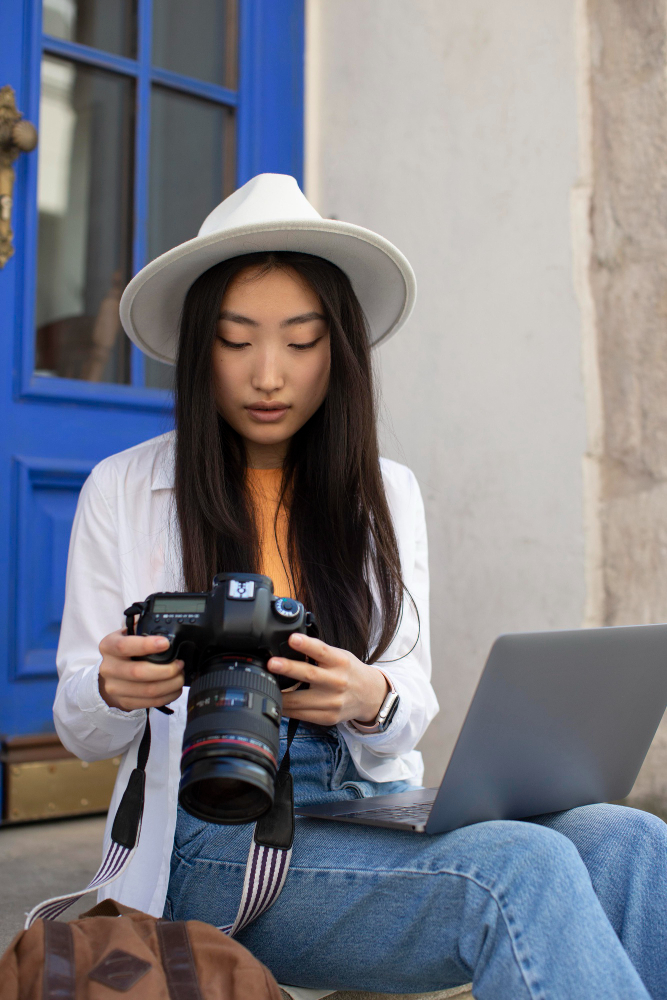
Creating Building Landscape Photographs
The practice of using grand buildings as subjects for photography has been around as long as the art of photography. Why do we consider buildings important enough to build countless works of art around them? Buildings carry their own sense of beauty and style that is quite different from that found in nature.To add to that, the beauty and style are human-made instead of natural phenomena. A sense of pride is an underlying sentiment in many building photographs.
Buildings were not only built by people, they are extremely important for people. For most of us, buildings are where we live, work, and relax. Good building landscape photography needs to reflect this importance. This is a challenging task. Although buildings are quite easy to find (just take a look around you!) and tend to be quite patient subjects, it is hard to take a thought-provoking, artistic photograph. After all, you don’t want your representation of an important building to be a boring, static image. You want a picture with an impact, one which says something about the building in question, or uses the building to make a statement about the city or society. This is what makes quality building landscape photography.
Building landscape photography can be broken down into two styles: commercial and fine art. The two styles can blend, as a photograph taken with one interest in mind could be used for the other.
Commercial building landscapes are often associated with tourism. You find impressive views of large, sweeping buildings in advertisements for cities and the hotels, restaurants, and conference centers they contain. In this mode of building photography, one of the goals of the photographer is to cosmetically enhance the building’s attractiveness. The photograph will then have the desired effect of making people want to visit, stay in, or eat at this particular place.
Real estate and property management also rely heavily on building photography. When selling or renting a house or condo, the owner wants to give a favorable impression of the building. These photographs may often be taken in a way to make the building appear large, clean, and pleasant to live in.
The other type of building landscape photography is fine art. Fine art photographs are not made specifically to advertise or sell buildings or locations, although they may sometimes end up being used for these purposes. Here, the goal of the photographer is to create a statement or inspire some sort of thought or emotion in the viewer. The photographer must have a concrete idea of what he or she would like to express with the photograph.
These types of photographs can make a lasting impression on the viewer. I can still remember a building photograph I saw many years ago whose image still stays with me. The architecture of the building was quite peculiar, with a traditional brick base but a very modern, glossy, reflective upper half. Viewers of this particular photo had several reactions. Some thought the building was in poor taste. Some liked the juxtaposition of old and new construction. Perhaps the photographer meant to use this to make a statement about the growth of the new times on top of the old. Or perhaps the building simply attracted the artist’s eye because it was so strange looking! It is not always obvious what the artist’s intention is, but the best building landscape art evokes different sensations and thoughts for many viewers.
To get started in building landscape photography you will most likely need to pick up some new equipment, particularly medium or large-format cameras. However, if you cannot afford professional-grade equipment, don’t despair. It is possible to make excellent building landscapes even with ordinary use cameras.
Next, you’ll need to choose a subject. Spend some time brainstorming about this. Choose a building you think is significant. Look up some information about the building and architecture. Who made the building, and when? Have any important events happened here? What type of people usually frequent the building? Then visit the building and spend some time planning your shot. Look at the natural lighting, the impact of the weather, and viewing angles you have to choose from.
Finally, a good start in finding your artistic inspiration is to study other examples of building landscape photography. Find some good books of photography featuring buildings. As you look at each picture, ask yourself what the photographer’s intention was. Once you have an idea of this main theme, try to figure out the details. How did the artist set up the shot? Could the picture have been made differently? What do you really like about the work, and what would you change? When you have some answers to these questions about somebody else’s work, you are ready to start making your own art!
Here are more photography resources you should keep in your favorites file.

